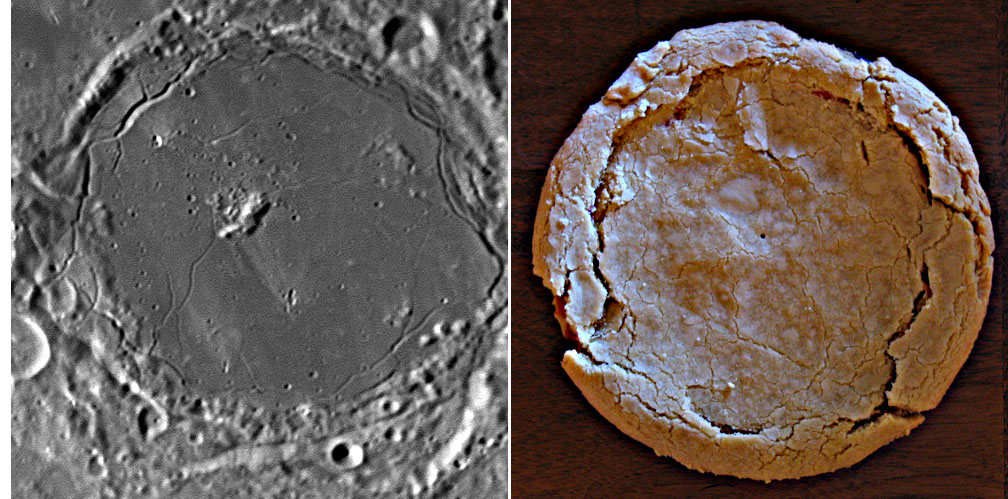
image by Wes Higgins (left) and Andrew Planck (right)
Andrew Planck writes: Last weekend I was in the kitchen baking a cherry pie to celebrate my mom’s 94th birthday (she was born on George Washington’s birthday), and when I took the pie out of the oven I was immediately struck by some similarities between the pie, the crater Pitatus, and some of your commentary in “Modern Moon” about subsidence and arcuate rilles around basins and large craters. I have been asked by my astronomy club to do a presentation on the Moon, and I plan to show the attached photo of my mom’s cherry pie to help explain that when lava comes up through cracks and fissures to cover basin floors, after it cools and forms a crust it is so heavy that the floors frequently subside and arcuate rilles appear around the perimeters. In the case of my mom’s cherry pie, when the underlying pie filling (the “lava”) cooled and shrank a bit, the heavy pie crust subsided and some remarkable arcuate rilles opened up. (I don’t make “light and fluffy” pie crusts–it’s solid butter, flour, & sugar! CAW comment: The rilles of floor-fractured craters like Pitatus probably form in association with an uplift of the crater floor by an intrusion of magma. But Pitatus undoubtedly does not taste as good.
Technical Details:
Dec 3, 2004 (left) 18″ Starmaster Reflector; and undated (right). CAW stretched both images.
Related Links:
Rükl chart 54
Wes’ lunar photos
SUPPORT LPOD - VISIT A SPONSOR (CLICK AN AD BELOW)!
COMMENTS?
Click on this icon File:PostIcon.jpg at the upper right to post a comment.



